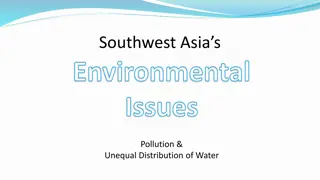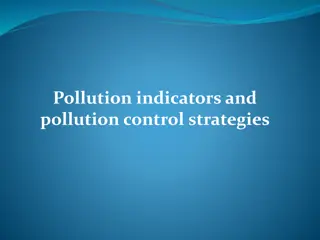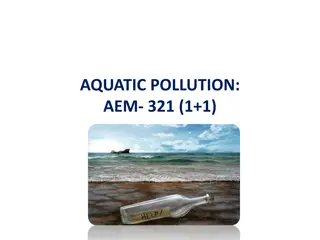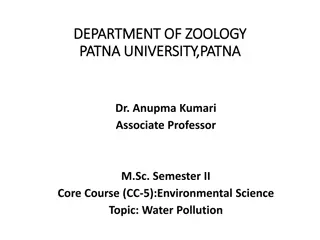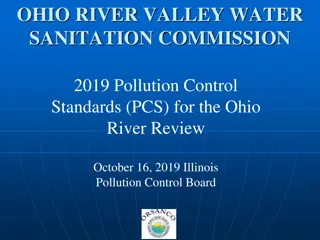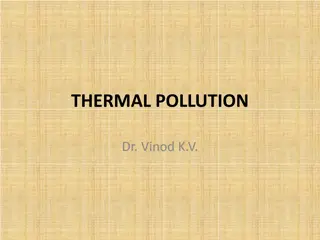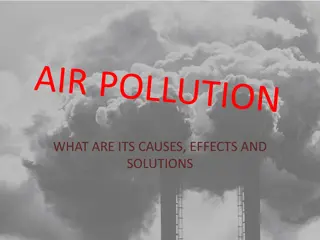Understanding Thermal Pollution and Its Impact on Water Systems
Thermal pollution results from the discharge of heated water into natural water bodies, leading to a harmful increase in temperature. This degradation of water quality has severe implications for aquatic ecosystems, causing harm to fish, shellfish, and plants. Major sources include nuclear power plants, industrial effluents, domestic sewage, and coal-fired power plants. The elevated water temperatures can disrupt ecosystems and harm marine life, emphasizing the importance of managing thermal pollution to maintain water quality and environmental sustainability.
Download Presentation

Please find below an Image/Link to download the presentation.
The content on the website is provided AS IS for your information and personal use only. It may not be sold, licensed, or shared on other websites without obtaining consent from the author. Download presentation by click this link. If you encounter any issues during the download, it is possible that the publisher has removed the file from their server.
E N D
Presentation Transcript
P PRINCIPLES RINCIPLESOF E ENGINEERING NGINEERINGAND OF E ENVIRONMENTAL NVIRONMENTAL AND S SUSTAINABILITY USTAINABILITY LECTURE SEVEN: THERMAL POLLUTION DEPARTMENTOF ENVIRONMENTAL ENGINEERING
Introduction Thermal Pollution is the harmful increase in water temperature in streams, rivers, lakes, or occasionally, coastal ocean waters. It is the degradation of water quality by any process that changes ambient water temperature. A temperature increase as small as 1 or 2 Celsius degrees (about 2 to 4 Fahrenheit degrees) can kill native fish, shellfish, and plants, or drive them out in favor of other species, often with undesirable effects.
Explanation It occurs when an industry removes water from a source (e.g., a river), uses the water for cooling purposes, and then returns the heated water to its source. Power plants heat water to convert it into steam, to drive the turbines that generate electricity. For efficient functioning of the steam turbines, the steam is condensed into water after it leaves the turbines. This condensation is done by taking water from a water body to absorb the heat. This heated water, which is at least 15 degrees celsius higher than the normal, is later discharged back into the water body.
Causes The major sources of thermal pollution are discharge of heated water or hot waste material into water bodies from Nuclear power plant Industrial effluents Domestic sewage Hydro-electric power Coal fired power plants Thermal shock Other causes are : Deforestation Soil erosion
Nuclear power plants Nuclear power plants use water as a cooling agent. After the water is used, it is put back into a water supply at 9-20oC warmer . Emission from nuclear reactors increase the temperature of water bodies.
Coal-fired power plants Coal is utilized as a fuel. Condenser coils are cooled with water from nearby lake or river. The heated effluents decrease the DO of water. Damages the marine organisms.
Industrial Effluents Discharged power industry using turbo generators will have a higher temperature ranging from 6 to 9 C than the receiving water. water from steam-electric In modern stations, producing 100 MW, nearly one million gallons are discharged in an hour with increase in temperature of the cooling water passing by 8 to 10 C .
Domestic sewage Sewage is commonly discharged into lakes, canals or streams. Municipal sewage normally has a higher temperature than the receiving water. Increase in temperature of the receiving water decreases the dissolved oxygen of water. The foul smelling gases increased in water resulting in death of marine organisms.
Hydro electric power generation Generation of hydro electric power sometimes results in negative thermal loading in water systems. Creates less heat on water sources less than nuclear power plant.






